Self-Portrait
by Ahn Jun
My Self-Portrait is a kind of performance without an audience, only to be photographed since it is portray of my desire rather than the reality.
There was a day I recalled my time of my adolescent years. At that time, I was sitting on the edge of my apartment in New York and looking over the cityscape. I had a thought that suddenly my youth was coming to an end and I could not figure out the future. I sat on the edge and looked down.
Then I saw the empty space, the void.
There was a sudden change in my perspective on life and death, present and future. The vision of cityscape I was witnessing was not real for that moment. I felt illusion of beautiful buildings was just like the future or ideal which never can reach but surrounds us in somewhere. Then I looked down. What I was actually standing on was the empty space. It was the “present” for me. So I took a picture of my feet. That was the start of my project.
I place my body at the edge of landmark structures or places that have personal significance such as my apartment and my friends, and take self-portraits. I explore fear, pleasure, and tension within that situation. I move my body at the edge of the building until the memory card it full. Then I take a picture of my feet like a ritual of the performance. What in front of the edge during I was moving is the vain. What my feet dangling on is the empty space that people cannot see, but only can be perceived by the fear of heights. It reminds that the fear of heights originated from the moment when the vision collapse into the perception of the space.
Also, the space presented in my works contains questions about our perception. In this era of tall building used as hotels, office or luxurious living place, people do not feel fear of heights and even prefer to live there because they perceive that environment as a “beautiful skyline view.” This is because people see psychologically what they want to see and perceive what they wish to perceive. However when they look down at the same place they feel fear of heights, because they perceive the space instead of a projected perception. From my perspective, the horizontal vision is a kind of illusion. I consider people believe that the landscape they are seeing is complete. But when they are on the edge of the building and looking down, instant fear comes. This is the moment where optical perception conflicts with spatial perception. My photographs consists these two perceptions. It could also be interpreted as our psychological boundary. Whenever people are put on the edge of something, human beings become vulnerable. This is reality. I consider the world is full of conflicts between illusion and reality.
Between the reality of emptiness and fantasy far away, we desire the ideal, but finally our body grabs the reality as my body in full context reveals my fear although I wished to be portrayed like I could fly or jumping off from the edge. However, there is one picture that portrays my desire which is opposite from the context. For that reason, that picture isolated from the context creates completely different story from the reality. It is the reality that no one could perceive outside of photography. Hence the traditional role of performance and photography as a role of documentation is reversed on my work.
To capture the desire, I set up the camera and auto shutter, which can take multiple shot per second. Then I move my body at the edge until the memory card is full. The camera “documents” the movement of my body. The thumbnail images of my movement documented are the world of context, which is not different from what we perceive. It clearly shows the tension of my body between the structure and the vain in front of it. However, when I take an instant of moment out of the context, it completely converts the context. Like my body is peacefully melted into the environment without fear, or like the aggressive moment as my body is just jumping out to the world of illusion. I believe in an instant of life, our reality meets with dream or fantasy although we cannot perceive that since it’s too short and vulnerable. And I believe photography capture this dream like moment just like the moment was everything we saw.
Ahn Jun is a photographer based in New York and South Korea.
To view more of Ahn Jun's work, please visit her website.
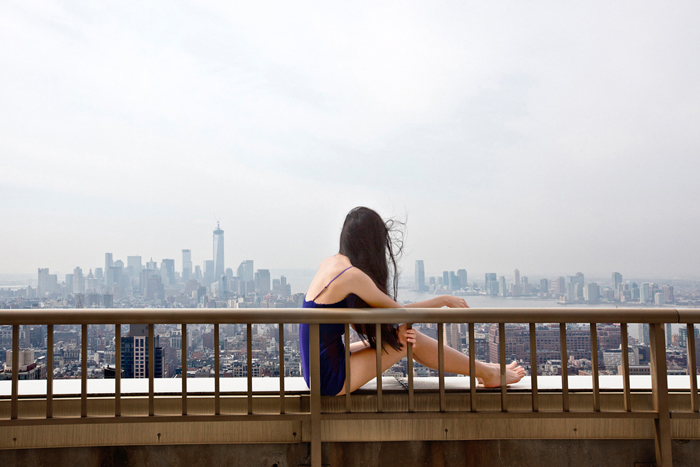
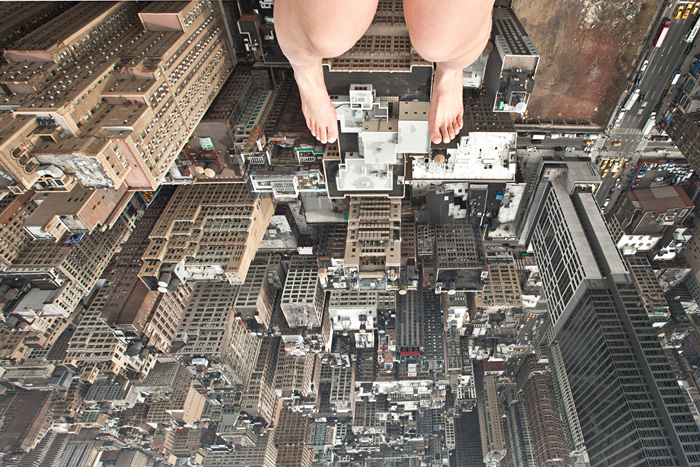
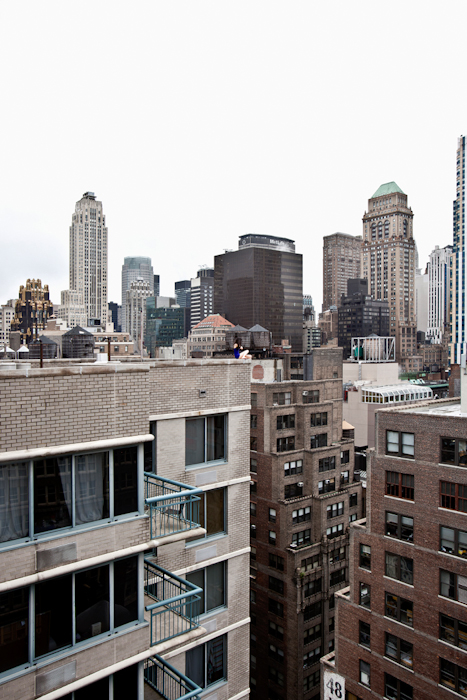
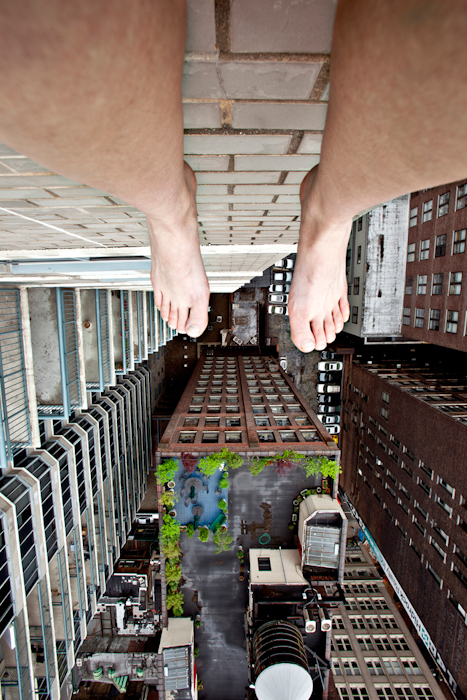


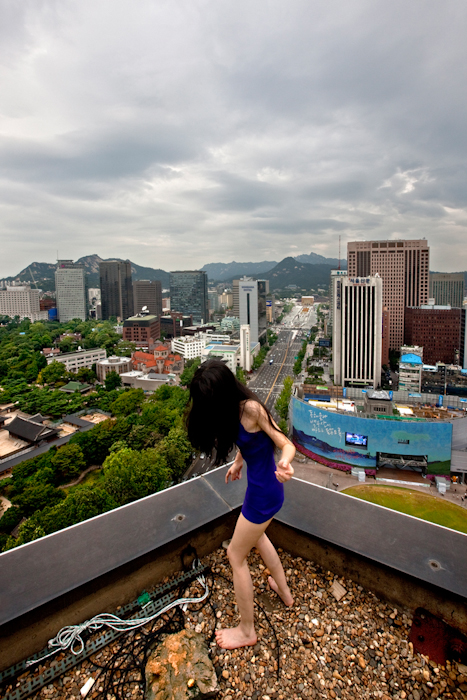

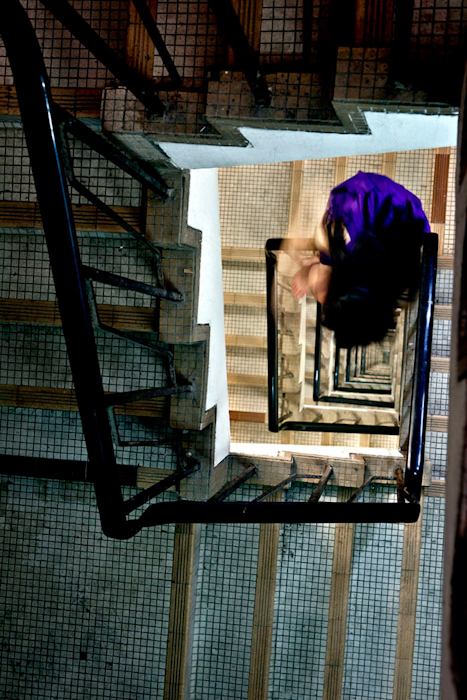
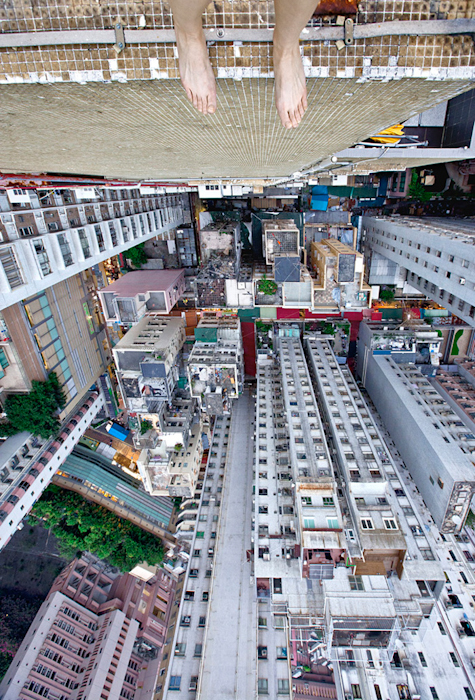

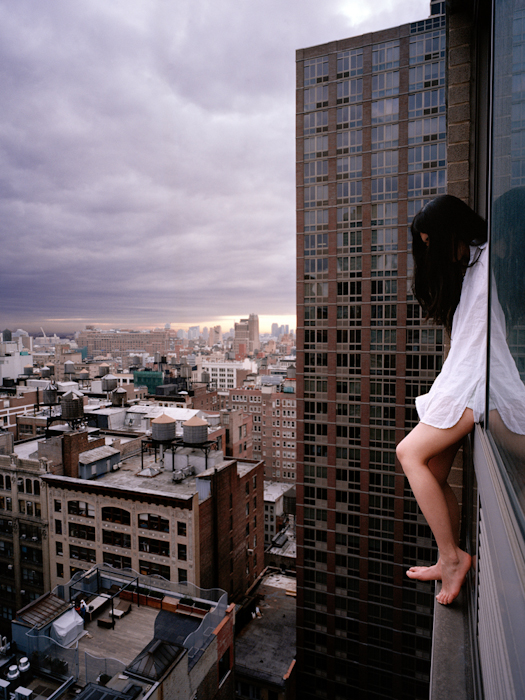


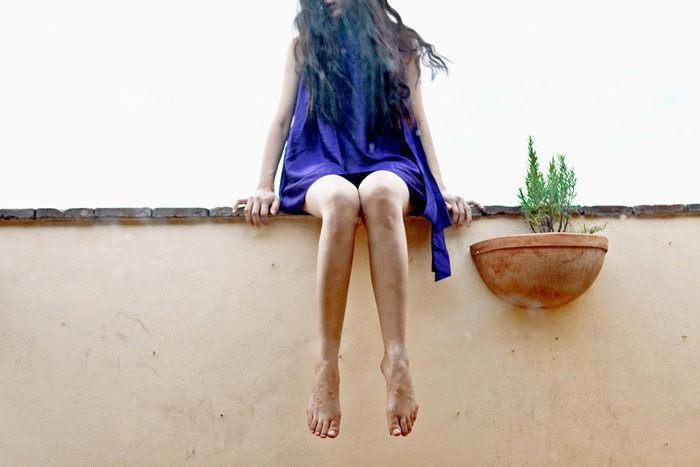
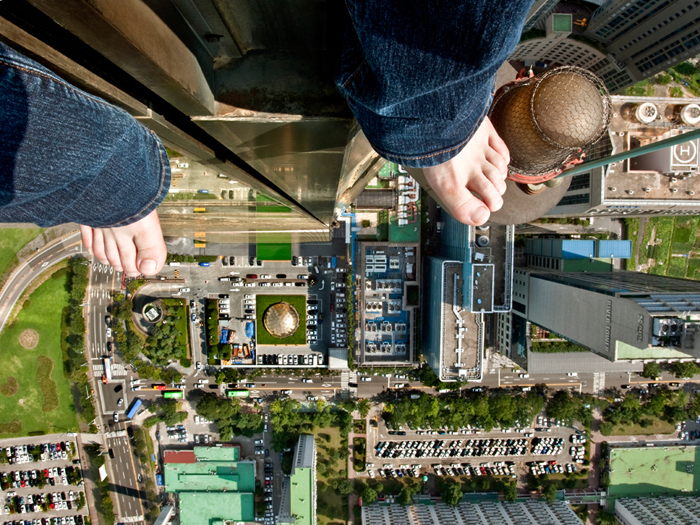
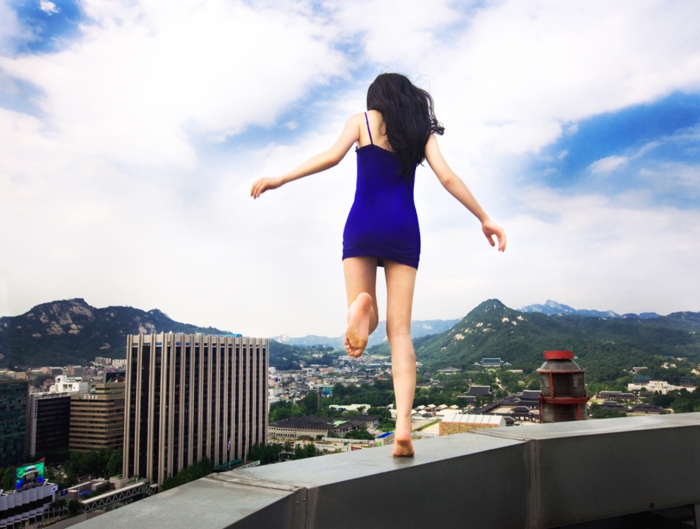
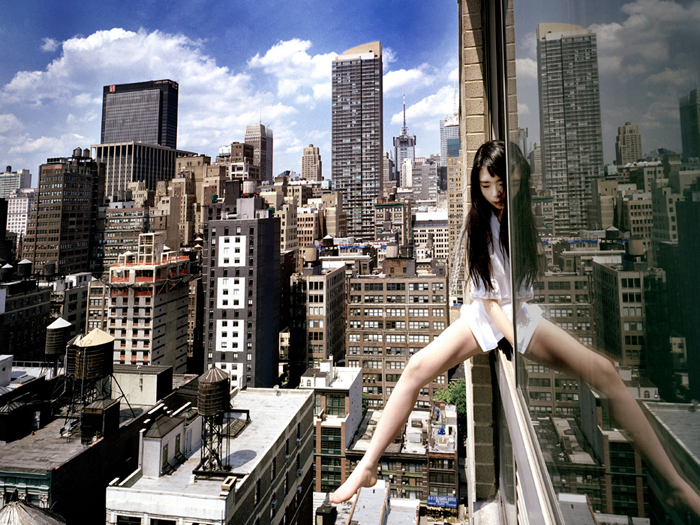

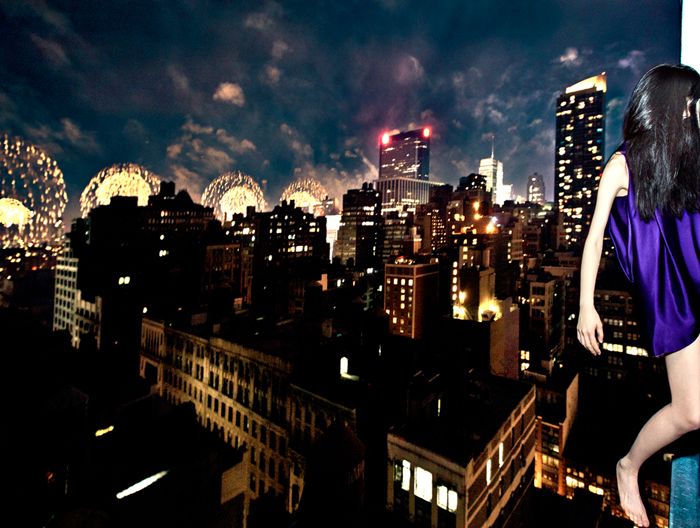
 Previous page
Previous page
